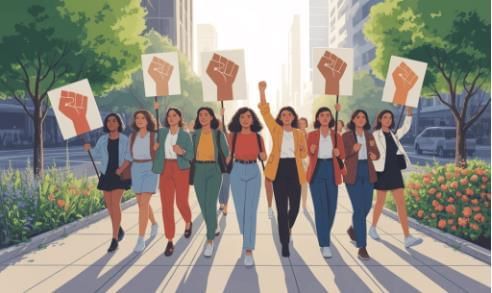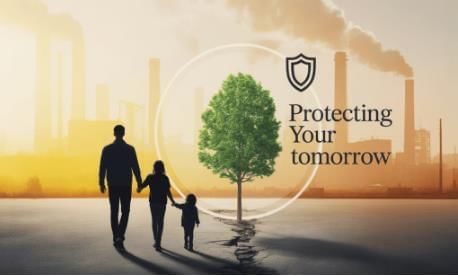Groups Influencing Policy Outcomes Chapter Notes | AP U.S Government and Politics - Grade 12 PDF Download
Introduction
In the United States, public policy is shaped by a wide range of political actors, from formal institutions to grassroots movements. Single-issue groups, ideological movements, professional associations, protest organizations, and bureaucratic agencies each influence policy at different stages—from setting the agenda to implementing and evaluating laws. Historic movements like civil rights and women’s rights have brought transformative policy changes, while organizations like the NRA and AARP continue to influence specific issues. Elections and political realignments also play a key role in shifting policy priorities, making public participation and advocacy vital components of the democratic process.
Political Actors and the Shaping of Public Policy
Across American history, a range of political actors, from official institutions to grassroots initiatives, have significantly influenced public policy. These actors include single-issue organizations, social movements, protest groups, professional associations, the military, and bureaucratic agencies. Each contributes uniquely to policy development, from raising public awareness to advocating for policy implementation.
Single-Issue Groups
Single-issue groups concentrate their resources, efforts, and influence on a specific cause. These groups are typically well-organized and driven by passionate supporters.
- The National Rifle Association (NRA) is a prominent single-issue group advocating for Second Amendment rights and opposing gun control measures. With over 5 million members, the NRA wields influence through lobbying, candidate endorsements, advertising campaigns, and legal action.
- The American Association of Retired Persons (AARP) represents the interests of individuals aged 50 and older. Its large, engaged membership base enables it to shape policies related to healthcare and Social Security.
- Due to their members’ strong dedication, single-issue groups often achieve high voter turnout and substantial lobbying influence.
Ideological and Social Movements
Ideological and social movements stem from shared beliefs or societal experiences, seeking to transform cultural norms, legal protections, and public policies over time.
Civil Rights Movement
Organizations such as the NAACP, SCLC, SNCC, and CORE championed racial equality throughout the 20th century.
Their advocacy contributed to landmark laws, including:
- Civil Rights Act of 1964
- Voting Rights Act of 1965
These groups employed strategies like litigation, direct action, lobbying, and protests to drive federal policy reforms.
Women’s Rights

While the 19th Amendment granted women voting rights in 1920, the women’s rights movement gained momentum in the 1960s and 1970s. Groups like NOW and NARAL advocated for gender equality, reproductive rights, and access to education.
Note: Title IX (1972), which banned gender discrimination in federally funded educational programs, particularly in sports, resulted from persistent advocacy by women’s rights organizations.
Environmental Movement
Organizations such as the Sierra Club and Audubon Society gained traction in the 1960s and 1970s as public concern for pollution and conservation grew.
Their efforts led to significant legislation:
- Clean Air Act (1963)
- Clean Water Act (1972)
- Establishment of the Environmental Protection Agency (EPA)
These groups used protests, lobbying, and public education campaigns to influence lawmakers.
Consumer Rights

- In the 1960s, consumer rights advocates, led by figures like Ralph Nader, highlighted unsafe products and deceptive advertising. Nader’s book, Unsafe at Any Speed, spurred automotive safety reforms.
- More recently, the Consumer Financial Protection Bureau (CFPB), established in 2011 following the 2008 financial crisis, regulates mortgage lending, credit practices, and financial institutions.
Protest Movements
Protest movements shape policy by drawing media coverage, mobilizing grassroots support, and pressuring elected officials. They often collaborate with social movements and interest groups.
- The March on Washington (1963) played a key role in advancing civil rights legislation.
- Contemporary movements like Black Lives Matter and March for Our Lives have focused national attention on racial justice and gun violence prevention.
Note: Protest movements influence public opinion and set political agendas, even if they do not directly draft legislation.
The Policy-Making Process: Who Influences What and When?
The impact of political actors varies across the stages of the policymaking process. Some actors excel at shaping public opinion and setting agendas, while others are more effective during implementation or evaluation.
Stages of Policymaking and Actor Influence

Agenda Setting
- Actors raise awareness, define issues, and urge lawmakers to take action.
- Well-resourced interest groups may fund media campaigns or commission studies.
- Social movements and protest coalitions often garner media attention to elevate issues to the national stage.
Policy Formation and Budgeting
- Actors with specialized expertise, such as bureaucrats and professional organizations, are instrumental in drafting legislation and allocating resources.
- The National Education Association (NEA) may provide guidance on education budgets.
- The Department of Defense may propose defense spending priorities.
Adoption (Legislative Passage)
- This stage involves formal votes in Congress or state legislatures. Political parties, campaign donors, and advocacy groups actively lobby to sway legislators’ votes.
- Groups may rate legislators, mobilize voters, or threaten to back opposing candidates.
Implementation
- After a law is enacted, agencies like the EPA, DOJ, or HHS carry out its provisions.
- These agencies have considerable authority over rulemaking and enforcement.
- Interest groups often seek to influence the regulations developed during this phase.
Evaluation
- Once a policy is in place, interest groups and agencies assess its effectiveness.
- They perform audits, collect feedback, and propose adjustments.
Policy Shifts, Elections, and Realignments
Elections can drive significant changes in policy direction, particularly when one party secures a substantial majority. These shifts often reflect evolving public opinion or broader social movements.
How Elections Influence Policy
- Parties campaign on platforms outlining their priorities.
- Elected officials are expected to implement promised policies.
- Voter frustration with policy outcomes can influence subsequent elections.
Political Realignments
Realignments occur when large groups of voters permanently shift their party allegiance due to economic, cultural, or political changes.
Historical Examples
- New Deal Realignment (1930s): The Great Depression prompted working-class voters to align with the Democratic Party, supporting FDR’s welfare and labor reforms.
- Reagan Era (1980s): Conservative Democrats in the South and working-class whites moved to the Republican Party, drawn to cultural conservatism and tax reforms.
Note: Realignments are infrequent but profound, reshaping party coalitions, priorities, and policy directions for decades.
Key Terms
- 19th Amendment: The 19th Amendment to the U.S. Constitution granted women the right to vote, a pivotal achievement of the women’s suffrage movement. It reflected advocacy for gender equality and highlighted efforts to balance minority and majority rights in democracy.
- Adoption stage: The adoption stage is when a proposed policy or law is formally approved by a governing body. It marks the shift from debate to action, shaped by the influence of various stakeholders.
- Agenda-setting stage: The agenda-setting stage determines which issues gain priority in public and political discourse. It shapes policy outcomes by influencing what policymakers address, driven by interest groups and societal actors.
- American Association of Retired Persons (AARP): The AARP is a nonprofit advocating for individuals aged 50 and older, focusing on healthcare, retirement savings, and Social Security. It significantly influences public policy and provides member services.
- Civil Rights Act of 1964: This landmark law prohibits discrimination based on race, color, religion, sex, or national origin in public life, including employment and education. It was a major victory for the civil rights movement, reshaping societal norms.
- Civil Rights Movement: The Civil Rights Movement of the 1950s and 1960s sought to end racial discrimination and secure equal rights for African Americans. It drove significant legislative and social changes, advancing minority rights.
- Clean Water and Clean Air Act: These laws regulate pollution and protect natural resources. The Clean Water Act addresses water pollution, while the Clean Air Act sets national air quality standards, reflecting advocacy by environmental groups.
- Congress of Racial Equality (CORE): Founded in 1942, CORE was a key civil rights organization using nonviolent action to combat racial segregation. It organized events like Freedom Rides and the March on Washington to promote equality.
- Consumer Rights Movement: This movement advocates for consumer protections against unfair business practices, ensuring access to accurate product information. It emerged to address corporate abuses and empower consumers.
- Consumer Financial Protection Bureau (CFPB): Established in 2010, the CFPB enforces consumer protection laws in the financial sector, promoting fair treatment and transparency by financial institutions.
- Environmental Rights Movement: This movement advocates for environmental protection and the right to a healthy environment. It addresses pollution, climate change, and environmental justice, particularly for marginalized communities.
- Environmental Protection Agency (EPA): Created in 1970, the EPA enforces environmental regulations to protect human health and the environment. It plays a critical role in policy implementation and rulemaking.
- Evaluation stage: The evaluation stage assesses a policy’s effectiveness post-implementation. It involves data analysis and recommendations for improvements, ensuring policies meet their goals.
- Ideological/Social Movements: These movements seek societal change based on shared values or goals. They influence policy and norms through advocacy, mobilization, and public awareness campaigns.
- Implementation stage: The implementation stage involves executing adopted policies. It significantly affects outcomes as actors apply laws and regulations in practice.
- National Association for the Repeal of Abortion Laws (NARAL): Founded in 1969, NARAL advocates for reproductive rights, particularly abortion access. It influences policy through public mobilization, lobbying, and education.
- National Association for the Advancement of Colored People (NAACP): Established in 1909, the NAACP fights racial discrimination and promotes African American rights through legal challenges, advocacy, and grassroots organizing.
- National Rifle Association (NRA): Founded in 1871, the NRA promotes Second Amendment rights, lobbies for gun legislation, and supports candidates aligned with its stance. It offers training and educational programs.
- National Organization for Women (NOW): Founded in 1966, NOW is a feminist group advocating for women’s rights, including reproductive rights and workplace equality, through grassroots activism and lobbying.
- New Deal Realignment: This 1930s political shift saw diverse groups, including labor unions and African Americans, align with the Democratic Party under FDR’s New Deal, reshaping American politics.
- Policy formation and budgeting stage: This stage involves developing policies and allocating resources. It requires negotiation among stakeholders to ensure policies are effective and financially sustainable.
- Policy Shifts: Policy shifts are significant changes in government direction, influenced by public opinion, interest groups, or elections. They affect social, economic, and foreign policy areas.
- Protest movements: These organized efforts use demonstrations and activism to push for change. They raise awareness, influence policy, and challenge societal norms in response to grievances.
- Ronald Reagan’s conservative policies: From 1981 to 1989, Reagan’s policies promoted free-market capitalism, reduced government intervention, and emphasized traditional values, driving a political realignment.
- Southern Christian Leadership Conference (SCLC): Founded in 1957, the SCLC, led by African American ministers, used nonviolent protests to advance civil rights, influencing policies on equality and desegregation.
- Student Nonviolent Coordinating Committee (SNCC): Established in 1960, SNCC mobilized young activists for nonviolent protests, including sit-ins and voter drives, shaping civil rights legislation in the 1960s.
- Title IX: Enacted in 1972, Title IX prohibits sex-based discrimination in federally funded education programs, promoting gender equality, especially in sports, and influencing affirmative action policies.
- Unsafe at Any Speed: Popularized by Ralph Nader’s 1965 book, this term criticized the auto industry’s safety negligence. It spurred vehicle safety regulations and consumer protection policies.
- Voting Rights Act of 1965: This law eliminated racial barriers to voting, such as literacy tests, ensuring equal electoral access. It was a key achievement of the civil rights movement.
- Women’s Rights Movement: This movement seeks equal rights for women in areas like voting, education, and employment. It has driven legal and societal changes for gender equality.
FAQs on Groups Influencing Policy Outcomes Chapter Notes - AP U.S Government and Politics - Grade 12
| 1. What are the main political actors that influence policy decisions? |  |
| 2. How do policy shifts occur in government? |  |
| 3. What role do interest groups play in shaping public policy? |  |
| 4. Can political realignments affect policy outcomes? |  |
| 5. What are some examples of historical policy shifts driven by political actors? |  |















